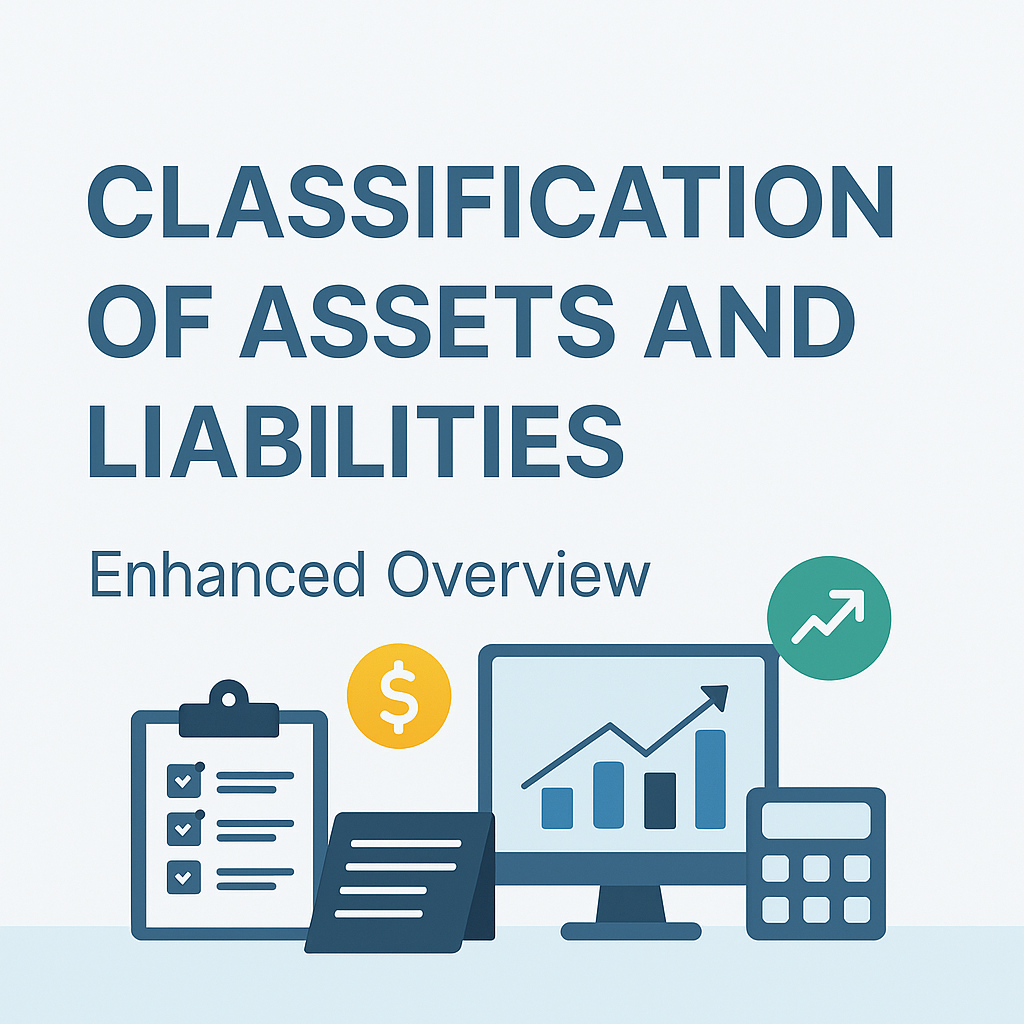Proper classification of assets and liabilities is fundamental to preparing a fair and transparent Balance Sheet. The ICAI’s Guidance Note on Financial Statements for Non-Corporate Entities mandates clear bifurcation into Current and Non-Current. This classification is mandated by ICAI Guidance Note for non-corporate entities (effective from FY 2024-25). It aligns with the definition of operating cycle as 12 months if otherwise not identifiable.
Let’s break this down with clear definitions, examples, and a tabular summary.
🔍 What Are Current and Non-Current Assets?
🔹 Current Assets:
Assets are classified as current if they meet any of the following criteria:
- Expected to be realized in, sold or consumed in the normal operating cycle (assumed to be 12 months if not clearly identifiable).
- Held primarily for trading.
- Expected to be realized within 12 months after the balance sheet date.
- Cash or cash equivalent not restricted for 12 months after the balance sheet date.
🔹 Non-Current Assets:
All other assets that do not meet the criteria above are non-current. These generally provide benefit beyond 12 months.
💰 What Are Current and Non-Current Liabilities?
🔹 Current Liabilities:
Liabilities are current if they meet any of the following conditions:
- Expected to be settled in the normal operating cycle.
- Held primarily for trading.
- Due within 12 months after the reporting date.
- The entity does not have an unconditional right to defer settlement beyond 12 months.
🔹 Non-Current Liabilities:
All other liabilities that are not due within the operating cycle or 12 months are classified as non-current.
📊 Summary Table with Real Examples
| Item | Classification | Reasoning/Example |
| Fixed Deposit (FD) maturing after 12 months | Non-Current Asset | FD maturing in 15 months from balance sheet date |
| Term Loan – EMIs due in next 12 months | Current Liability | Current maturities of long-term borrowings |
| Term Loan – Remaining balance | Non-Current Liability | Payable beyond 12 months |
| Prepaid Insurance for 3 years (01.04.25 to 31.03.28) | Current (1 yr) + Non-Current (2 yrs) | Proportionate split based on expense benefit |
| Trade Receivable with 15-month credit period | Non-Current Asset | Customer allowed 15-month credit |
| Loan to Staff – Next 12 months EMI | Current Asset | Realisable within 12 months |
| Staff Loan – Remaining installment | Non-Current Asset | Realisable after 12 months |
| Provision for expenses due in 10 months | Current Liability | Payable within 12 months |
| Provision for expenses due after 12 months | Non-Current Liability | Example: future litigation reserve |
| Investment in equity for long-term gains | Non-Current Investment | Held for more than 1 year |
| Investment in liquid fund for 3 months | Current Investment | Intended to be realized within 12 months |
📌 Key Notes
- Split items as needed: For example, a term loan should be divided between current maturities and long-term liability.
- Disclosure is crucial: Mention current and non-current portions separately in notes to accounts.
- Operating cycle: Unless otherwise evident, a 12-month cycle is assumed.
📘 Conclusion
Accurate classification ensures stakeholders have a transparent picture of your entity’s financial position. With ICAI’s Guidance Note now effective, it’s essential for non-corporate entities (like partnerships, proprietorships, HUFs, societies, etc.) to adopt this standardized reporting practice.
Need help applying this to your financials? Consult your Chartered Accountant today!

15 comments
amoxil pills – combamoxi.com amoxil uk
fluconazole over the counter – click buy fluconazole medication
poppers and cialis – click cialis ingredients
viagra cialis levitra buy online – https://strongvpls.com/ buy viagra melbourne australia
Facts blog you possess here.. It’s hard to find strong quality script like yours these days. I justifiably comprehend individuals like you! Withstand vigilance!! purchase zithromax
This website really has all of the low-down and facts I needed about this subject and didn’t identify who to ask. neurontin 300 mg efectos secundarios
I’ll certainly carry back to skim more. https://prohnrg.com/
With thanks. Loads of knowledge! https://ursxdol.com/sildenafil-50-mg-in/
I’ll certainly return to be familiar with more. https://aranitidine.com/fr/levitra_francaise/
More posts like this would bring about the blogosphere more useful. https://ondactone.com/spironolactone/
This is the make of enter I recoup helpful.
aldactone where to buy
The thoroughness in this break down is noteworthy. http://www.gtcm.info/home.php?mod=space&uid=1157015
xenical online order – on this site buy orlistat 60mg
Thanks for putting this up. It’s understandably done. http://mi.minfish.com/home.php?mod=space&uid=1421064
buy weed prague pure cocaine in prague